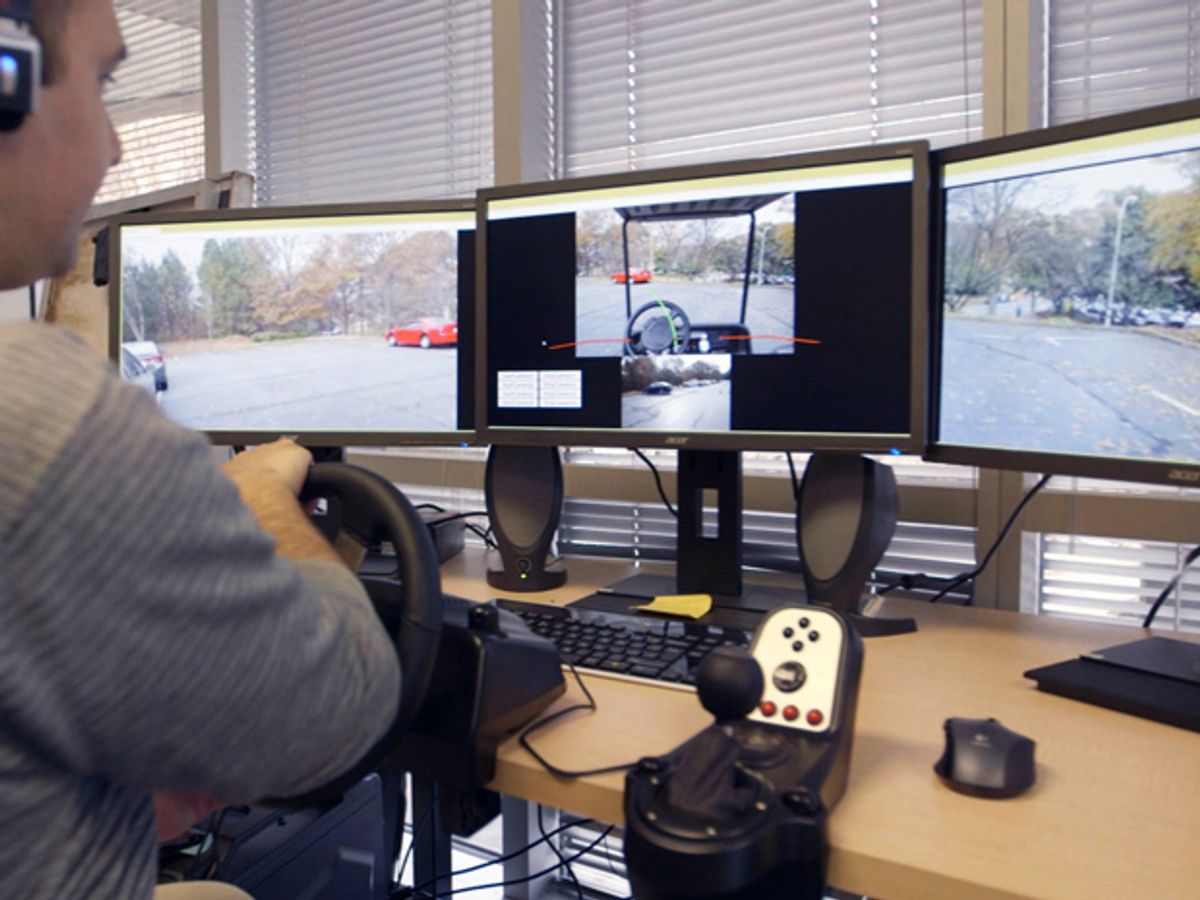This picture looks like a pretty sweet gaming setup. And it is a pretty sweet gaming setup, with three monitors and a bunch of off-the-shelf Logitech gear. The game itself has the most realistic graphics we’ve ever seen, featuring the heartstopping action and excitement of driving a golf cart around a parking lot, and it’s brought to you by Ford, who wants to turn driving a car into something you can do from a computer. From thousands of miles away.
To get this to work, you just need a control system on one end, some basic and inexpensive hardware in the car, and a fast and reliable data connection. That last bit is usually the limiting factor, since driving a car in real time isn’t something you want to have latency issues with.
Obviously, with current data connections, nobody will be remote controlling cars at highway speeds, or likely even out on public roads. As Ford suggests, parking lots and other semi-controlled or constrained environments are probably the way to go, especially for someone like a car rental company, who has control over both the vehicle and location infrastructure. Driving for people who can’t drive, like the elderly or the disabled, is a lot farther down the road. Or as Ford would say, further down the road.
What’s more interesting here is the potential for some flavor of partial human-in-the-loop autonomy. Making an autonomous car that’s able to be 100% autonomous is really, really hard. Making an autonomous car that’s able to be 90% or 95% autonomous is far easier. So in the example of a rental car service, maybe you put some relatively cheap cameras and sensors in the car, along with a remote control connection. Most of the time, the car is able to move itself around the lot, but 5% or 10% of the time, it gets stuck for some reason, like a parking spot is too small, or there’s another car in the way. At that point, the car can call a human for help, and that human can jump in over a wireless remote connection and solve whatever problem the car ran into.
Obviously, here’s the application we’re most excited about:
Probably safer to not be in the back seat for that kind of driving anyhow.
Evan Ackerman is a senior editor at IEEE Spectrum. Since 2007, he has written over 6,000 articles on robotics and technology. He has a degree in Martian geology and is excellent at playing bagpipes.



